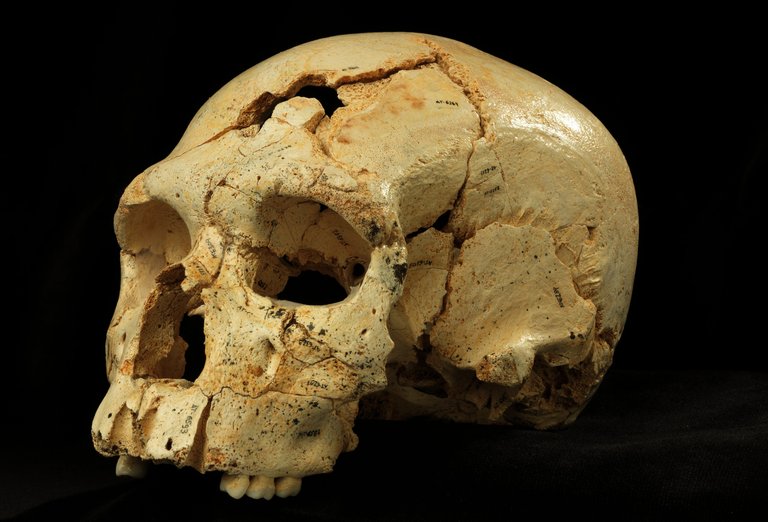Key data on the evolution of Neanderthals, analyzing 17 Atapuerca skulls

Juan Luis Arsuaga is the lead author of the Science article, but along with him, 18 other authors have signed the work, including Asier Gómez Olivencia. According to him, the main contribution of the study is that they have known that 430,000 years ago are the first distinctive features of Neanderthal anatomy. “These particularities are seen in face and teeth,” Gómez adds.
Gómez highlights the richness of the Osin of the Bones: “There are no other deposits in the world with this type of collection.” In fact, the 17 skulls investigated belong to this site and some have come to light for the first time. The first found were found in 1993, three of which were released in the journal Nature. Fragments of the rest have been found in subsequent excavations, and they have worked hard on their classification and composition.
In addition, during these years it has deepened the geology of the site, information that has served to understand how so many corpses were accumulated in the same place and to carry out the dating. In fact, for the dating of the fossils new techniques have been used tested in Atapuerca itself, which have concluded that they are 430.000 years ago.
One of the greatest advantages of Osín Óseo fossils is that they all belong to the same biological population. This “has allowed us to see variability,” explains Gómez, “and we have shown that variation in skulls is low.” In addition, in view of other skulls of the Middle Pleistocene (outside Atapuerca), it has been concluded that at that time some groups had more features than others that characterize the Neanderthals. This means “a complex evolution,” according to Gómez.
Searching for answers
It has been a great debate about the formation of the skull of the Neanderthals. Osin's work of bones confirms that the evolutionary model was modular or mosaic. As the first changes occurred in the teeth and face, researchers have proposed specialization in chewing forms and structures. The article has shown favorable evidence for this idea, as well as data suggesting that neurohazards and the brain have subsequently evolved, such as skull volume, encephalization ratio, skull area, facial skeleton, jaws and teeth.
Therefore, in the discussion section of the article, the authors point out that some researchers have suggested that the individuals analyzed should be considered as former members of the species Homo neanderthalensis. However, the authors consider that the characteristics of the fossils of Osín Óseo are quite different from those of Homo neanderthalensis, so they are differentiated groups (taxa). However, they have acknowledged that they cannot yet decide whether or not they belong to the same species.
However, they indicate their intention to continue working to answer this and other questions. Gómez has advanced that “in the Osín of the bones there are all the bones of the skeleton and little by little we are investigating each anatomical part”. The result of these investigations has described as important “not only to understand the evolution of Neanderthals, but also to know the changes that have occurred in our lineage”.
He also recalled that recently the DNA of the oldest fossil man has been obtained to date, “so the information that is being obtained from this deposit has not yet been exhausted”.
Photo gallery
Buletina
Bidali zure helbide elektronikoa eta jaso asteroko buletina zure sarrera-ontzian











